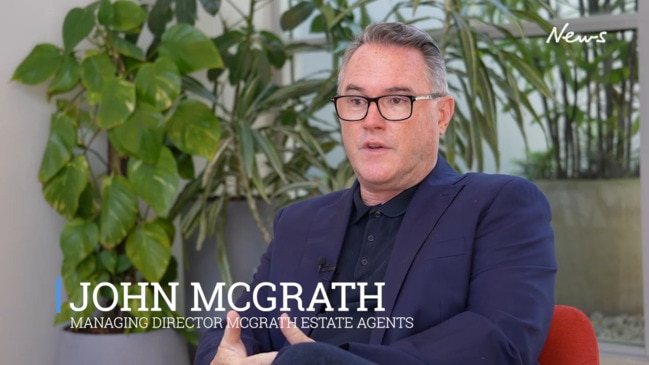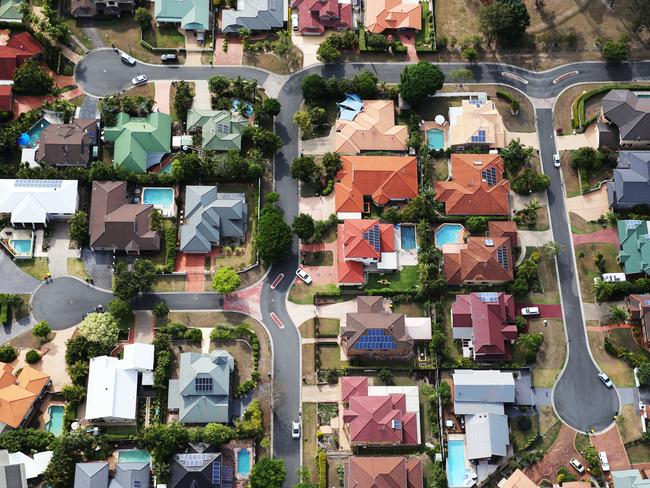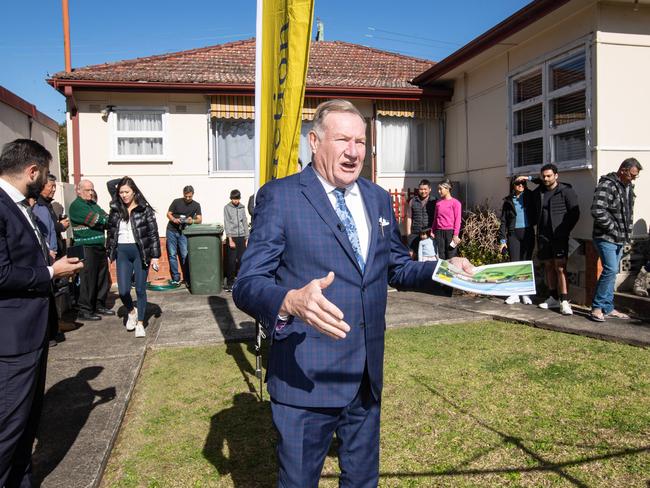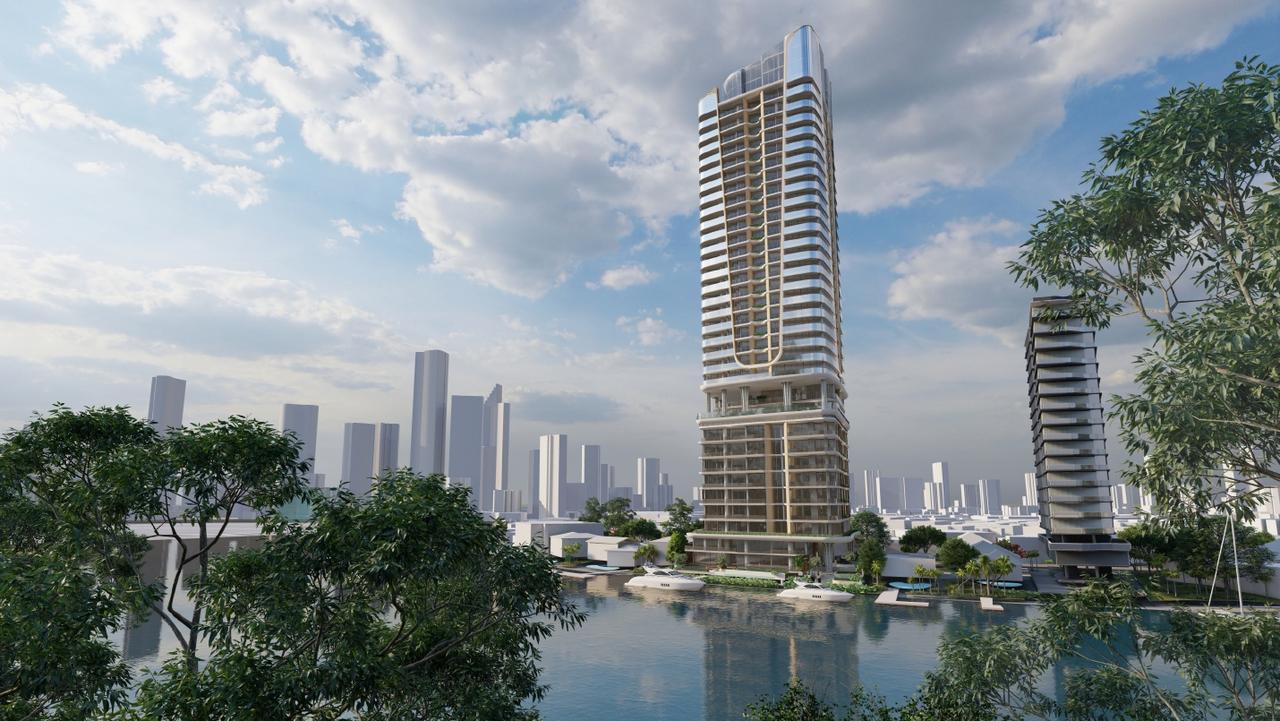Where new rate rise will hit hardest and what you can do
These are the Aussie suburbs where the RBA’s latest rate hike will hit hardest and what households can do about it.

Property
Don't miss out on the headlines from Property. Followed categories will be added to My News.
The battler suburbs of western Sydney, aspirational locations in inner city Brisbane, Melbourne’s middle ring and regional ACT are set to be the areas hit hardest by the RBA’s latest rate rise.
New Reserve Bank of Australia governor Michelle Bullock raised the case rate by 0.25 basis points on Tuesday to 4.35 per cent, in the first move on rates since June.
It comes as another crushing blow to Aussie households amid the cost of living crisis, after the RBA sent rates spiralling skyward in unprecedented fashion in pushing the cash rate from 0.1 per cent in April 2022 to 4.1 per cent in June.
The latest rate rise means more than two million Aussie households with a mortgage are now in a ‘negative cash flow’ position – they are spending more than they earn – according to exclusive data provided by Digital Finance Analytics.

Tuesday’s rise pushed a further 201,968 mortgaged households into a negative cash flow position. Which now means 2,133,815 of 3,857,058 Australian homes with a mortgage – more than one in two – are now earning less than they are spending.
According to Digital Finance Analytics founding principal data scientist and banking sector analyst Martin North these homeowners could be forced to sell in two to three years.
The Local Government Areas of Brisbane (12,791 more mortgaged households with a negative cash flow) and the Gold Coast (5,676) in Queensland: Blacktown (4,758) in Sydney’s west,: Wyndham (4,811) and Casey (4,408) in middle Melbourne, and the unincorporated area around Canberra (5,439) is where Tuesday’s new 0.25 per cent rate rise has hit hardest.

Finder’s head of consumer research Graham Cooke said the rise was a tough pill to swallow for homeowners.
“Mortgage holders are already on the ropes, the last thing they wanted was another slug from the RBA,” he said.
“Aussies with a $590,000 mortgage will now be forking out roughly $1345 more per month than they were in April last year. That’s a huge amount of extra money to be spending on your mortgage, especially when the cost of almost everything else is also going up.”
WHAT YOU CAN DO ABOUT LATEST INTEREST RATES RISE
Canstar’s editor and money expert Effie Zahos said homeowners in financial stress had three main options that could buy them some relief in the short term:
+ switching to a low one-year fixed rate
+ reverting from principal and interest repayments to interest-only payments
+ extending loan terms by five years.
Property Investment Professionals of Australia chair Nicola McDougall said more investors would have to exit the market.
“The smart move obviously if you are in a financial situation like that is to sell the property before you’re forced to do so,” she said.
“What that will probably do would be to increase the undersupply of rental properties that we have and where supply is dwindling, rents are continuing to go higher.”
She said it was almost guaranteed investors would use their rent rise card when it came around for their property.
WHAT LATEST RATE RISE MEANS IN SYDNEY AND NSW
Parts of western Sydney, including Blacktown, Campbelltown and Fairfield, will be among those worst by the latest rate hike – with a spate of forced sales expected to take the heat out of the recent housing market recovery.
The latest hike means close to 52,000 households in Blacktown, or about 87 per cent of borrowers in the area, would be in a negative cash flow position, according to Digital Finance Analytics (DFA) data.
Close to 30,000 households would be in the position of spending more than they were earning in the Campbelltown region, accounting for more than 95 per cent of borrowers. In Fairfield, the proportion would be close to 80 per cent and in the Liverpool area it was 87 per cent.
Households in this position were deemed more likely to default on their loans or be forced to sell at discounted prices, according to DFA.
MORE on what the latest rate rise means in Sydney and NSW
WHAT LATEST RATE RISE MEANS IN BRISBANE AND QLD
The average Queensland mortgage now costs 61 per cent more in repayments than it did in April 2022, with experts warning the fallout of this and more hikes to come will hit renters too.
Landlords will now be reassessing their position along with homeowners, experts warn, with many at “the tipping point” in holding costs as they wait out their next legislated annual rent rise.
Canstar money expert Effie Zahos said “the pressure of a 13th rate hike might simply be too much for some households” including both owner occupiers and investors.
“Queenslanders would be looking at well over a $1300 increase to what their regular mortgage repayments are (compared to pre-rate rises in April 2022),” she said. “That’s a lot of money to find in the budget over a year, like $16,000 – that’s more than what households spend on food.”
MORE on what the latest rate rise means in Brisbane and QLD
WHAT LATEST RATE RISE MEANS IN MELBOURNE AND VICTORIA
Casey and Cardinia (3,142 more mortgaged homes with a negative cash flow) in Melbourne’s middle ring and Wyndham closer in to the CBD, are the worst hit suburbs by the new rate hike in Victoria.
Thousands of Victorian mortgage holders were already digging into savings and cutting back essential spending to keep up with loan repayments as the cost of living soars, before Tuesday’s rate rise.
Which now means thousands more families will be forced to further tighten their belts.

MORE on what the latest rate rise means in Melbourne and Victoria
WHAT LATEST RATE RISE MEANS IN ADELAIDE AND SOUTH AUSTRALIA
More than half of all South Australian mortgage holders are now experiencing mortgage stress, with almost 9500 more pushed into that bracket by Tuesday’s rate rise.
Before the latest rise, According to Digital Finance Analytics (DFA) data, of the 293,900 South Australian households with a mortgage, 160,283 of them – or 54 per cent – were currently experiencing “mortgage stress” as of the end of October.
The interest rate rise of 0.25 per cent by the Reserve Bank of Australia on Melbourne Cup Day has now plunged another 9370 South Australians into mortgage stress, taking that total to 169,653 households, or 57.72 per cent of all mortgage holders.
That number jumps to 11,442 households if the RBA imposes another pre-Christmas blow to budgets at its final meeting of the year on December 5.
This figure has jumped significantly in recent years, with 138,298 recorded as stressed in May 2022
More Coverage
Originally published as Where new rate rise will hit hardest and what you can do





